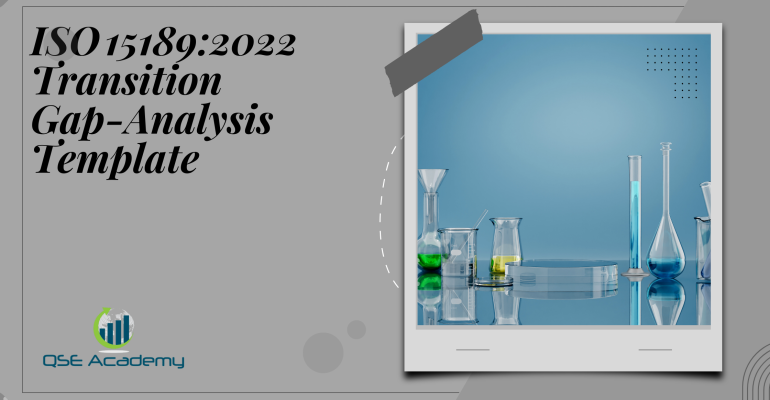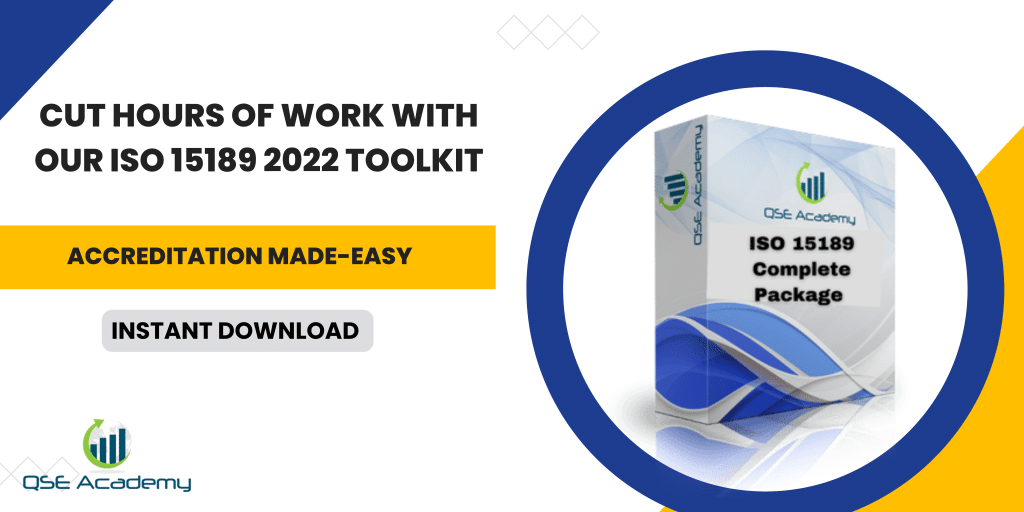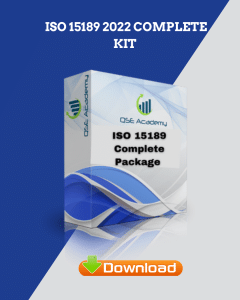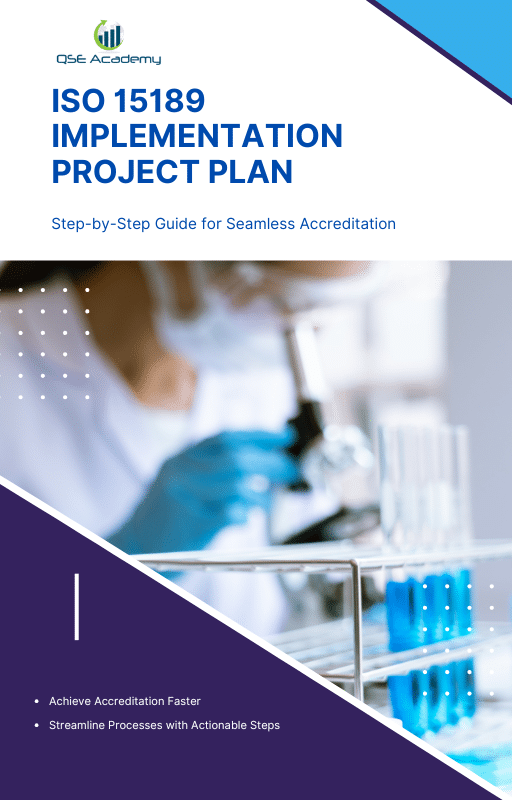ISO 15189:2022 Transition Gap‑Analysis Template
Last Updated on October 22, 2025 by Hafsa J.
Why Every Lab Needs a Gap Analysis Before Transition
When a new version of a standard drops, the biggest mistake labs make is jumping straight into rewriting procedures. I’ve seen it happen countless times. Teams rush to “update documents,” thinking that will guarantee compliance. It never does.
The truth is, a gap analysis is your transition safety net. It’s what shows you, line by line, where your 2012 system still holds up—and where it doesn’t. Without it, you’re basically upgrading blindfolded.
In my experience working with clinical and diagnostic labs, those that took the time to perform a structured gap analysis cut their transition work in half. They didn’t waste time fixing what was already fine, and they spotted major risks early—before auditors did.
Here’s what a proper ISO 15189:2022 gap analysis gives you:
-
Clarity: You’ll see exactly which clauses have changed and how they affect your lab.
-
Focus: It prevents you from drowning in paperwork by highlighting only what truly needs attention.
-
Confidence: When your assessor asks, “How did you prepare for the transition?”, you’ll have evidence, not guesses.
Pro Tip: Treat your gap analysis like a map, not a report. You’ll refer to it repeatedly during planning, training, and internal audits.
Understanding the Purpose of a Gap Analysis
Let’s clear this up first — a gap analysis isn’t another audit.
It’s a diagnostic tool. Instead of grading your lab’s performance, it tells you where your system stands today and what still needs attention before you face an assessor.
Think of it as your transition “health check.”
When ISO 15189:2022 replaced the 2012 version, the structure and intent of many clauses shifted. The goal of a gap analysis is to bridge that shift — so your existing procedures, forms, and records continue to make sense under the new structure.
Here’s what a good gap analysis does:
-
Connects old to new: It maps your current documentation (from 2012) to the updated clauses in 2022.
-
Reveals weaknesses early: It highlights areas where you lack evidence, validation, or new records.
-
Guides your transition plan: It becomes the foundation for your project timeline and action list.
In my experience: Labs that skip this step often spend more time redoing work later — because they only discover the gaps during their audit.
Pro Tip: Conduct your first gap analysis at least 6 to 12 months before your transition audit. It gives your team enough breathing room to correct, test, and verify changes without rushing.
Common Mistake: Treating the gap analysis like a formality.
Don’t just tick “compliant” or “non-compliant.” Go deeper — ask, “Is our process effective under the new intent of the standard?” That mindset is what separates successful transitions from stressful ones.
Step-by-Step Process for Conducting an ISO 15189:2022 Gap Analysis
Once you understand what a gap analysis really does, it’s time to get practical.
The process isn’t complicated, but it must be methodical. Here’s exactly how I guide laboratories through it.
Step 1. List All Clauses from ISO 15189:2022
Start by creating a checklist that covers every clause from 5 to 8 of the 2022 edition.
Each entry should include a brief description of what the clause covers, so anyone using the list understands what’s being reviewed.
Pro Tip: Build your checklist in a shared spreadsheet or document management tool. It keeps the team aligned and allows updates in real time.
Step 2. Review Your Existing 2012 Documentation
Go through your current Quality Manual, procedures, and forms.
Map each 2012 clause to its equivalent in the 2022 version using a clause correlation matrix.
This shows you where you’re already compliant and where new intent or structure has been introduced.
Example:
Many of the old “Technical Requirements” from Clause 5 (2012) are now spread across Clauses 6 and 7. Seeing that connection helps you reorganize documentation efficiently instead of starting from zero.
Step 3. Evaluate Compliance Level
For each clause, assess how well your current system meets the new requirement.
Use three clear ratings:
-
Compliant
-
Partially Compliant
-
Not Compliant
This helps you prioritize updates based on risk and effort.
Pro Tip: Use a simple color scheme—green for compliant, yellow for partial, red for non-compliant. It makes reporting easier and gives management a quick visual overview of progress.
Step 4. Assign Actions and Responsibilities
Every identified gap needs ownership.
For each item, document:
-
The corrective or update action required
-
The person responsible
-
The target completion date
Common Mistake: Leaving responsibility undefined. Without a clear owner, even minor updates get lost in day-to-day work and resurface only during audit panic.
Step 5. Verify and Re-Assess
Once actions are completed, revisit the same checklist.
Reassess each clause to confirm that the gap is fully closed and the update is effective.
This not only tracks progress but also serves as strong evidence during your transition audit.
Example:
A regional diagnostic lab I supported ran a re-assessment every quarter for six months. By the final review, every previously weak clause had supporting evidence—and their assessor described their transition as one of the most controlled they’d seen.
A gap analysis done this way isn’t just paperwork—it’s your roadmap.
It keeps your team accountable, your transition visible, and your system fully aligned with ISO 15189:2022 before the assessor ever steps in.
Key Areas to Focus On During Your Gap Analysis
Not all clauses in ISO 15189:2022 will give you trouble.
Most labs already have a solid foundation from the 2012 version.
The challenge is knowing where the real differences lie—because that’s where most transition gaps appear.
From what I’ve seen during transition projects, these are the areas you need to pay special attention to.
1. Risk and Opportunity Management
This is one of the biggest changes in the 2022 standard.
Risk management is now integrated into nearly every part of the quality system.
Labs must show how they identify, evaluate, and act on risks that could affect quality or patient safety.
Pro Tip: Start by reviewing your incident reports, internal audits, and nonconformity records.
You’re probably already capturing risk data—you just haven’t been labeling it that way.
Common Mistake: Treating risk assessment as a one-time form instead of an ongoing review process.
2. Personnel Competence and Impartiality
Clause 6 puts a stronger focus on evaluating competence continuously, not just during onboarding.
Assessors will expect evidence that staff performance is monitored, reviewed, and supported through retraining or mentoring.
You also need to show how you prevent conflicts of interest—especially if staff are involved in both testing and reporting results.
Pro Tip: Link your competence matrix directly to your training records and internal audit findings.
That connection shows real control and understanding of competence management.
3. Information Management Systems (LIS/LIMS)
The 2022 standard recognizes that laboratories are now digital.
Your information management system—whether it’s a full LIMS or a simple database—must be validated and controlled just like any other piece of equipment.
Check that you have clear evidence for:
-
Data integrity validation
-
Access controls
-
Backup and recovery testing
-
Version control for software updates
Common Mistake: Assuming your IT department “handles it.”
Assessors want to see that you, as the lab, understand how your system ensures data reliability and security.
4. Patient Safety and Confidentiality
Patient safety has moved from being a background principle to a measurable requirement.
Your lab needs to prove that processes, staff behavior, and IT systems all protect patient well-being and confidentiality.
Pro Tip: Review every point where patient data is accessed or transmitted. Document how you protect it—from collection to reporting.
5. Management Review and Continual Improvement
Clause 8 expands the management review inputs to include risks, opportunities, and overall system performance—not just incidents and customer complaints.
Make sure your management review template reflects this broader view.
It’s one of the easiest ways to show your assessor that your system aligns with the new intent of ISO 15189:2022.
Common Mistake: Copying last year’s management review format without updating inputs.
You’ll end up missing key requirements that auditors now look for.
Focusing on these five areas will cover roughly 80% of the transition work most labs face.
Get these right, and the rest of the standard will fall naturally into place.
How to Use the ISO 15189:2022 Gap-Analysis Template
Once you’ve identified what to review, it’s time to put the gap-analysis template to work.
This tool becomes your transition command center—it captures everything: what’s compliant, what’s missing, and who’s responsible for closing each gap.
Here’s how to use it effectively.
1. Start with the Clauses
Each row in your template should represent a clause from ISO 15189:2022 (Clauses 5 to 8).
Add a short summary for each so your team understands the intent behind the requirement—this helps avoid confusion when assigning actions later.
Pro Tip: Don’t just copy-paste the clause text. Rewrite it in plain language that fits your lab’s context. That makes it easier for section heads and technicians to engage with the checklist.
2. Compare Your Current Practice
In the next column, describe what your lab currently does under the 2012 system.
Be honest—this is not a pass-or-fail test. The goal is to identify what’s already solid and what needs to evolve.
Example:
For Clause 6.2 on personnel competence, your current system might track training completion but not performance monitoring. Note that gap clearly.
3. Document Evidence
Every statement of compliance must be backed by proof.
List where evidence lives—SOP numbers, record IDs, or file paths in your document-control system.
That makes life much easier when auditors ask, “Can you show me where this is recorded?”
Pro Tip: Keep this column updated during internal audits. It doubles as your evidence-tracking log.
4. Rate Your Compliance
Use clear, neutral terms: Compliant, Partially Compliant, or Not Compliant.
If you’re using a spreadsheet, color-code the ratings so you can quickly visualize where the largest gaps are.
Common Mistake: Rating everything “Partially Compliant” to stay safe. It makes prioritization impossible. Be decisive and realistic—your assessor will appreciate it.
5. Assign Actions and Responsibilities
Every gap needs an owner and a deadline.
Add columns for “Action Needed,” “Responsible Person,” and “Target Date.”
That transforms your checklist into a working implementation plan.
Pro Tip: Review this document monthly during management meetings—it keeps everyone accountable and prevents last-minute chaos.
6. Keep It Alive
Don’t archive the template after your first round.
Keep using it throughout your transition—it becomes your living proof of continuous improvement.
Example:
A private diagnostics lab I supported treated their gap-analysis file as their “transition dashboard.”
By the time of their surveillance audit, it was a full record of every improvement, with actions tracked to closure—earning them zero nonconformities.
Used properly, your gap-analysis template turns a complex transition into a controlled, transparent project.
It’s not just paperwork—it’s your audit story in spreadsheet form.
Turning Gaps into an Action Plan
A gap analysis is only as useful as what you do with it.
Once you’ve identified the gaps, the next step is to turn them into a real, trackable action plan—one that moves your lab from “awareness” to “implementation.”
Here’s how to turn those findings into focused progress.
1. Prioritize by Risk and Impact
Not all gaps deserve equal attention.
Start by asking, “If this gap isn’t fixed, could it affect patient safety, data integrity, or competence?”
Those are your high-risk areas—they go first.
Medium-priority items are those that impact compliance but not immediate safety.
Low-risk items, such as minor document format changes, can follow later.
Pro Tip: Use a simple three-level priority scale—High, Medium, Low—to plan your workflow. It helps allocate resources wisely and keep management reviews focused on what matters most.
2. Define Corrective Actions Clearly
Every gap should link to a clear, actionable step—not vague intentions.
For instance, instead of writing “Update training records,” specify “Add competence evaluation form to technician annual review process.”
The clearer the action, the easier it is to measure completion.
Common Mistake: Writing actions that depend on one person’s memory or judgment. Define them as tasks with specific deliverables and deadlines.
3. Assign Responsibility and Follow Up
Give each action a name next to it.
Whether it’s your Quality Manager, Section Head, or IT Officer—ownership drives accountability.
Schedule short, monthly follow-ups to review progress on all open actions.
Example:
One molecular diagnostics lab I worked with assigned one “transition champion” per department.
Each champion reported progress during the monthly quality meeting. Within six months, they closed 95% of their identified gaps.
4. Integrate with Your Risk Register
Here’s where smart labs stand out.
Don’t keep your gap actions in isolation—link them to your risk and opportunity register.
If a missing validation record is a risk, document both the issue and the corrective action under the same reference.
This shows assessors that your lab truly practices risk-based thinking.
5. Validate Before Closing
Before marking any action as “closed,” verify that the fix actually works.
Ask:
-
Does it meet the new ISO 15189:2022 intent?
-
Can we show objective evidence during the audit?
-
Have we trained the affected staff?
When you can confidently answer “yes” to those questions, the gap is genuinely closed.
A well-managed action plan turns your transition from reactive to proactive.
It’s how you demonstrate control—and how you walk into your next audit knowing there won’t be any surprises.
FAQs – ISO 15189:2022 Gap-Analysis & Transition
Over the past year, I’ve had the same questions come up repeatedly during ISO 15189 transition workshops.
If you’re leading the change in your lab, you’ve probably asked a few of these yourself. Let’s tackle them clearly and practically.
Q1: How often should we update our gap-analysis document?
Ideally, twice before your transition audit—once right after your initial review and again about three months before assessment.
That second update is where you confirm that every gap has been addressed and evidence is available.
Pro Tip: Treat your gap-analysis sheet like a living record.
Update it after every internal audit, management review, or corrective action meeting. That way, you never start from scratch again.
Q2: Who should lead the gap analysis?
Your Quality Manager should take the lead, but the process should never happen in isolation.
Each section head or department supervisor needs to review the clauses that affect their area.
For smaller labs, it can help to bring in an external consultant for one independent review—it’s easier for someone with fresh eyes to spot missing evidence or misinterpreted clauses.
Q3: Can we use the same checklist for internal audits?
Yes—and you should.
The gap-analysis checklist is a great foundation for your first internal audit under the 2022 version.
Once you’ve identified the major changes, simply expand your checklist to include audit questions and evidence fields.
Example:
One laboratory converted their gap-analysis spreadsheet into an internal audit tracker.
During their next assessment, the auditor commended it as “an excellent example of integrated planning.”
Q4: What if we can’t close all gaps before the next audit?
That happens more often than you’d think.
If your gap analysis shows open items, document your action plan and demonstrate progress.
Auditors respect transparency. It’s far better to show controlled improvement than to pretend everything is perfect.
Performing your gap analysis is the start of compliance, not the end.
The key is to keep it active—review it, refine it, and let it evolve as your lab does.
Bridge the Gap Before the Audit
Transitioning to ISO 15189:2022 doesn’t have to be a stressful process.
What separates confident labs from anxious ones is preparation—and that starts with a solid gap analysis.
When done properly, your gap-analysis template becomes more than a checklist.
It’s a living document that tells the story of your transition—where you began, what you improved, and how your system now meets the intent of the new standard.
Here’s the big takeaway:
-
Identify gaps early, while you still have time to fix them.
-
Prioritize based on risk and patient impact.
-
Assign ownership and track progress.
-
Validate each change before calling it “done.”
In my experience, the labs that treat this process seriously end up saving weeks of audit stress and costly corrective actions.
They don’t just meet ISO 15189:2022—they demonstrate real control and competence.
If you’re preparing for your transition audit, start today.
Download your ISO 15189:2022 Gap-Analysis Template or reach out to QSE Academy for a customized transition toolkit.
It’s the simplest way to bridge the gap between where you are—and where you need to be for accreditation success.
Whether it’s ISO 9001, ISO 22000, or the cosmetics-focused ISO 22716, I’ve spent my career I’m not here to call myself an expert—I prefer “enthusiast” because I truly love what I do. When I’m not writing about standards, you’ll probably find me playing Piano 🎹, connecting with people, or diving into my next big project💫. I’m an engineer specialized in the food and agricultural industry
make ISO standards less intimidating and more approachable for everyone.
turning complex jargon into clear, actionable steps that businesses can actually use.
There’s something incredibly rewarding about helping people navigate food safety and quality management systems
in a way that feels simple, practical, and even enjoyable.
I have a Master’s in QHSE management and over 12 years of experience as a Quality Manager
I’ve helped more than 15 companies implement ISO 9001, ISO 22000, ISO 22716, GMP, and other standards
My clients include food producers, cosmetics manufacturers, laboratories, and service companies
I believe quality systems should be simple, useful, and efficient.













